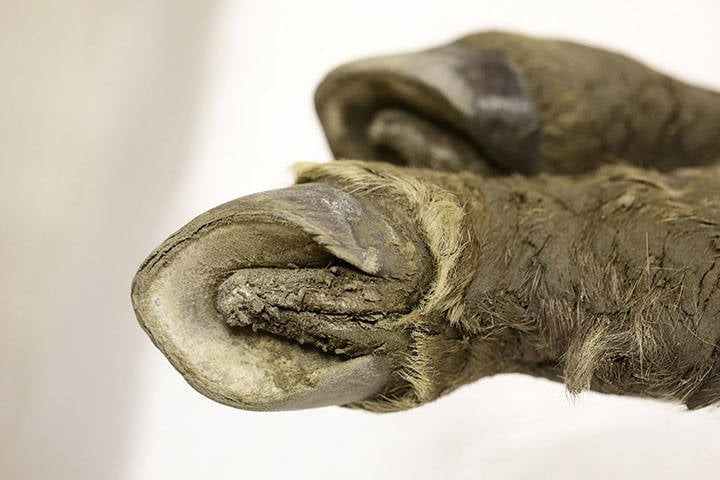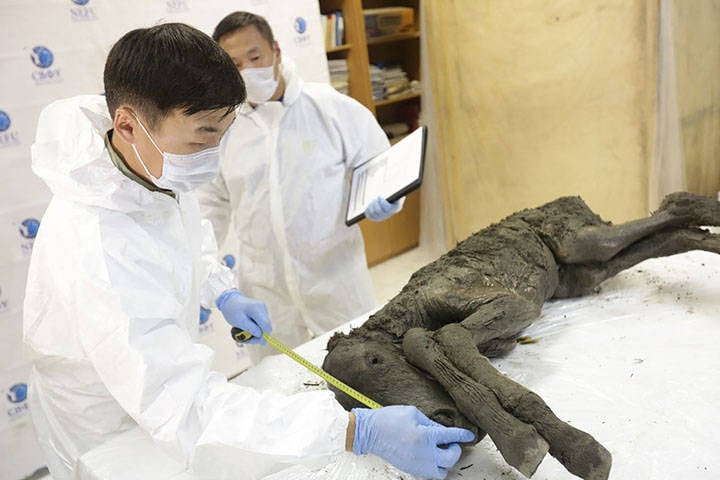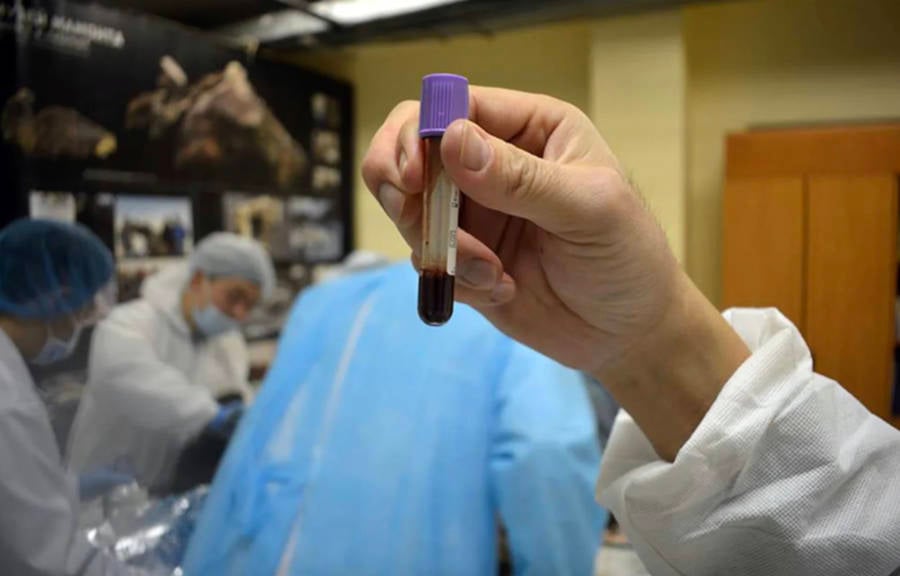Now, with preserved liquid blood in hand, these scientists are eager to clone this extinct species back to life.

Semyon Grigoryev/NEFU/The Siberian TimesThe Ice Age foal being analyzed by scientists from the Sooam Biotech Research Foundation.
Seven months ago, researchers uncovered a 42,000-year-old foal found perfectly preserved in the Siberian permafrost. That discovery was stunning enough, but Russian and South Korean scientists have now extracted liquid blood from the prehistoric specimen.
According to The Siberian Times, head of the Mammoth Museum in Yakutsk Dr. Semyon Grigoryev revealed the foal to be in exceptional condition upon completion of the autopsy.
Liquid urine, too, was successfully extracted from the ancient foal carcass, CNN reported.
Finding the animal intact with even its hair preserved was already remarkable, but scientists have now explored the animal’s interior and found similarly pristine conditions. Perhaps most incredible is that fact that 42,000-year-old liquid blood has successfully been extracted from the animal.

NEFU
“Samples of liquid blood were taken from heart vessels — it was preserved in the liquid state for 42,000 years thanks to favorable burial conditions and permafrost,” said Dr. Grigoryev. “The muscle tissues preserved their natural reddish color.”
“We can now claim that this is the best preserved Ice Age animal ever found.”
“This is extremely rare for paleontological finds, because some of them are either incomplete, fragmented, with serious body deformations or strongly mummified,” he explained. “The foal’s hair is intact on its head, legs and part of its body. Its tail and mane are black, the rest of the foal’s body is bay.”
Analysis of this remarkable find is being undertaken by both Russian scientists from the North-Eastern Federal University in Yakutsk and South Korean experts from the Sooam Biotech Research Foundation.
Even after two months of intense, collaborative study, Dr. Grigoryev is still impressed by certain unique characteristics of this specimen.

NEFU
“Having preserved hair is another scientific sensation as all previous ancient horses were found without hair,” he said. “Our studies show that at the moment of death the foal was from one to two weeks old, so he was just recently born.”
“As in previous cases of really well-preserved remains of prehistoric animals, the cause of death was drowning in mud which froze and turned into permafrost. A lot of mud and silt which the foal gulped during the last seconds of its life were found inside the gastrointestinal tract.”

NEFUThe preserved liquid blood taken from the foal.
While this discovery itself was impressive enough and the extraction of perfectly preserved liquid blood only added to the researchers’ excitement, this team of experts has even more astonishing prospects waiting on the horizon: Namely, they aim to clone this species back into existence.
Scientists are “confident of success” in extracting the requisite cells in order to do so. The foal’s Lenskaya breed is long gone, but by finding the right mother host for this project — which the team is already doing — the ancient species could well make a reappearance after 42,000 years.
“Hopefully, the world will soon meet the clone of the ancient foal who lived 42,000 years ago,” said Michil Yakovlev, editor of the university’s corporate media.

NEFU
If this sounds oddly similar to the woolly mammoth restoration project, which has garnered renewed traction over the past few years, the reason is fairly logical: The very same scientists are working on both ventures.
In the end, cloning species back from the dead brings about a slew of ethical considerations, such as the cloned animal’s quality of life and concerns over thrusting it into an entirely new environment with different climate conditions, flora, and fauns. However, the cloning efforts are already in progress and if these researchers have their way, may succeed sooner rather than later.
After learning about scientists extracting perfectly preserved liquid blood from an ancient foal discovered in Siberian permafrost, read about the 2,000-year-old Chinese woman known as Xin Zhui, one of the most well-preserved mummies in the world. Then, check out the ancient cave lion species scientists are trying to bring back to life.





